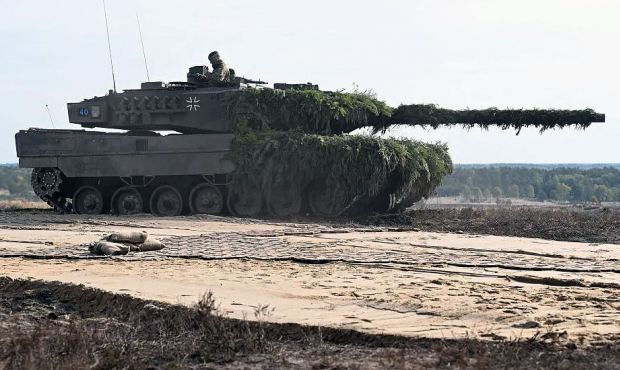Russia wants to bleed Ukraine dry before its tanks arrive

The decision by Kyiv’s international partners to send Nato-designed main battle tanks to Ukraine is a pivotal moment in the Russo-Ukrainian War. The tanks may be the focus of attention, but they were part of a much larger range of commitments – Ukraine’s partners have now committed to enabling Kyiv to reclaim its territory as quickly as possible. In spite of that, it will take months of hard fighting before Ukraine can make significant gains.
Russia is currently at the nadir of its capabilities, fielding poorly trained troops with older and more varied equipment, and with shortages of munitions. At the same time Russia has enough forces on the ground to mean that Ukraine can only make progress with a deliberate offensive. Russia can also mobilise and train more personnel. Russia’s defence industry is also increasing production, so that if Ukraine does not retain the initiative, it will become progressively harder to liberate territory.
It is this trajectory – combined with a need to convince Russia that protracted fighting is not in its interest – that led to several of Ukraine’s partners pledging large numbers of infantry fighting vehicles, tanks, artillery systems, combat support platforms, and expanding munitions production to meet Ukraine’s needs. There has also been a deliberate training pipeline built, with Ukrainians trained in the UK and then formed as units and exercised in Europe to learn how to field combined arms battalions.
The short term challenge Ukraine faced was that if it committed to offensive operations early in the year it might exhaust its reserves and lose a critical number of armoured vehicles, leaving it vulnerable to Russia later in the year. Its partners’ pledges now mean that Ukraine can confidently generate and field new combat unts through the year and Kyiv therefore has more freedom to use what it already has now.
In spite of the medium-term opportunity the pledged equipment offers, Nato-designed tanks will not be quick to bring into action. Nato-designed tanks are significantly different to the Soviet derived tanks currently operated by Ukraine. They have different crew workflow, maintenance requirements and are around 20-tonnes heavier. Tanks will also make little difference if fielded in small numbers. To field them at company strength, supported by infantry fighting vehicles and artillery, it is necessary to have a significant number of Ukrainians trained in how to fight the relevant systems, maintain and sustain them, and operate them in groups. This will all take time.
Thanks to the obstructionism and incompetence of the German government, Ukraine has ended up with the worst of the positive outcomes available. Rather than receiving a large number of a single type of tank they are receiving three different Nato-designed tanks, all in limited numbers and each with separate, complex maintenance requirements. This will delay getting these tanks to the front lines. And this is after Ukraine’s partners squandered three months deciding whether or not to send tanks at all. It is unlikely to be forgotten in Kyiv that Chancellor Olaf Scholz’s pointless prevarication has and will continue to cost Ukrainian lives.
The widespread obsession with comparing the technical specifications of Nato versus Russian tanks is broadly inconsequential. Nato tanks are better protected, have better optics and a better process for finding and engaging targets. Tank for tank the Nato armour is superior. But this is a full scale ground war in which the numbers of vehicles fielded and how well they are fought matters far more than the qualities of individual pieces of equipment. As the year goes on therefore it is likely the training pipeline being built that will give Ukrainian troops the decisive edge to take and hold ground.
Given the time it will take for newly pledged equipment to have an effect, it must be understood that the next few months of fighting are going to be hard. The Russians are massing airborne troops in Luhansk and armoured units to the South, while Wagner continues to assault Bakhmut. General Gerasimov, now directly running operations in Ukraine, is pushing for offensive operations to try and draw Ukraine’s reserves into defensive fighting and therefore remove their ability to prepare for offensive operations. The Russians are hoping that if they bleed out Ukraine’s better units now they will hold onto the territory they have seized. For the next couple of months at least Ukraine must avoid these threats with the equipment it already fields.
A wider issue for Ukraine’s partners is that after donating large volumes of front-line in-service equipment, they will need to rearm themselves. The British announcement to send up to 30 AS90 self propelled howitzers, for example, is going to significantly limit training time for the Royal Artillery unless a replacement gun is procured. The political decision to give Ukraine what it needs to win is important, but it must be followed up with a willingness to fund the consequences of the policy.
But for now, the hope in the West is that Ukraine will be able to use this donated equipment to make significant gains this year.
Jack Watling / The Spectator
